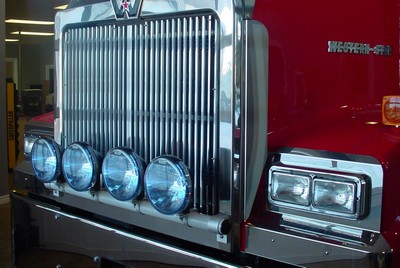GOT ENOUGH LIGHT?
January 11, 2017 Vol. 14 No. 01
I’ve long held that North American headlight standards are inherently dangerous because they don’t allow brightness levels to match the speeds we travel. It’s just too easy to over-drive your lights, meaning you don’t see obstructions like stalled cars or animals or — may all the gods forbid — pedestrians in the way until you’re past the point of being able to stop in time. Even back in the 1950s when cars and certainly trucks were much slower, this held true. In fact it was worse.
I have a 6-volt 1959 Volvo, for example, that’s decidedly dangerous on a dark country road at night. Make that a dark and rainy night and the poor old Swede’s lights and wipers compete for the meager supply of electricity on tap but can’t deliver enough of either one. I’ve been caught in such circumstances a couple of times and I can tell you it ain’t no fun. With all the mechnicals done, the next step in the car’s renovation is a conversion to 12 volts. Damn the originality thing, I just want to see. Until then, it’s a day-time car.
Assuming a 12-volt base, it used to be easy to provide yourself with proper lighting. Upgrade the headlamps to H4 halogen bulbs or better and add a couple of strong driving lamps and you were good to go, if sometimes illegally in the U.S. where strong lights have never found regulatory favor. For reasons that baffle me.
And please, oh please, forget the fog-lamp idea. They’re essentially useless in my experience, throwing very little light on the road in foggy conditions and nothing at all on a clear night. I laugh when I see cars and trucks driving along in fine weather with their fog lamps on. What on earth is the point?
But I digress.
 Until a decade or two ago, my own first step upon getting a new car was to make those lighting upgrades, but modern cars — and most trucks are no different — make that very difficult and/or expensive. There’s nowhere to find a solid mount for driving lamps when ‘bumpers’ are plastic, to start with. Headlamp bulb changes are easier but seem not to be cheap. I find this very frustrating as I haven’t had a vehicle in quite a few years with what I’d call adequate lighting. Long-range driving lamps are essential for me.
Until a decade or two ago, my own first step upon getting a new car was to make those lighting upgrades, but modern cars — and most trucks are no different — make that very difficult and/or expensive. There’s nowhere to find a solid mount for driving lamps when ‘bumpers’ are plastic, to start with. Headlamp bulb changes are easier but seem not to be cheap. I find this very frustrating as I haven’t had a vehicle in quite a few years with what I’d call adequate lighting. Long-range driving lamps are essential for me.
I have yet to explore the LED headlamp option so can’t comment, but I’d be grateful to hear from any of you have tried it.
ARE TWO LAMPS BETTER THAN ONE? Philips thinks so. It’s a little self-serving, or maybe a lot, but the point of the new Philips Lighting Safety Campaign is also a public service. It’s aimed at encouraging service technicians and vehicle owners to change headlight bulbs in pairs, whenever they need to replace a bulb due to damage, failure, or when one of the bulbs starts to dim.
Headlight bulbs tend to deteriorate and lose effectiveness after 2 to 3 years of use, the company says. Typically, people only replace the bulb that’s burned out or failing. Philips maintains that this is ill-advised because replacing just one failed bulb can result in an unbalanced or unpredictable headlight beam and potentially present a safety risk.